Ultralight Backpacking Basics
Ultralight backpacking is a concept often known to hikers but very often misunderstood. It’s a common misconception to believe that ultralight backpacking simply involves carrying minimal equipment on a hike and that having a lightweight backpack is sufficient.
Of course, this aspect is strictly necessary for the concept of ultralight backpacking, but it does not stop there. Above all, we will see that it is a philosophy of life based on 3 founding principles. For better understanding, let’s look at the basic equipment to take away and how to start this experience off the beaten track.
Are you ready to know everything about ultralight backpacking?
History of Ultralight Backpacking
Ultralight backpacking, as a hiking discipline, has only been around since the 1990s. However, some 19th-century travelers already tried to apply this principle during their hikes and travels. This is the case of John Muir, a Scottish naturalist born in 1838, who worked for the preservation of wilderness areas such as Yosemite Valley, in the United States. During the 1860s, he liked to travel the Rocky Mountains with the bare minimum: a bowl, a bag, a blanket, and an ice axe! A few years later, in 1878 to be exact, Robert Louis Stevenson traveled the current “Stevenson path” with a donkey and a book. Along the way, he conceived a sleeping bag himself and camped out under the stars to get closer to the essentials.
During the 1990s, with the development of hyper-consumption and the advent of globalization, many people wanted to reconnect with minimalism and this notion of going back to basics. This inclination gave rise to bushcraft, as discussed in the ultimate guide, and also paved the way for ultralight backpacking, which places a greater emphasis on minimizing weight during displacement.
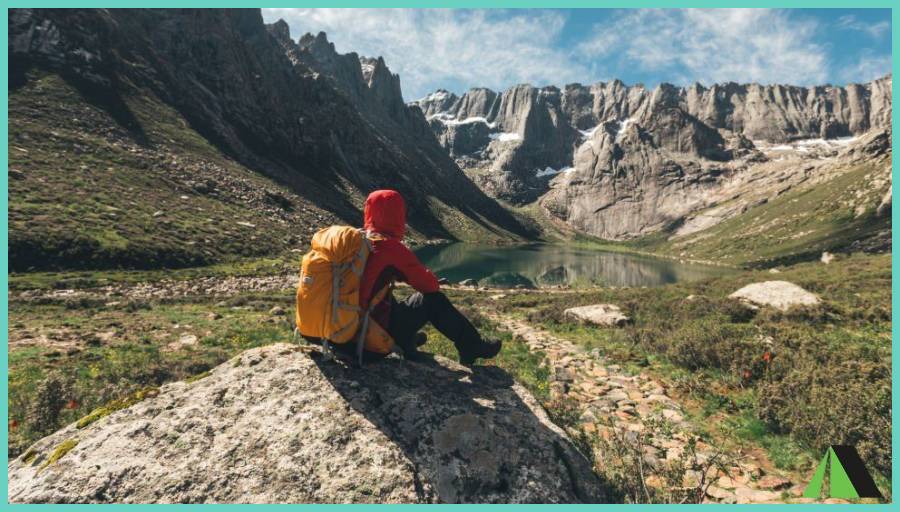
3 Main Principles of Ultralight Backpacking
The contemporary understanding of ultralight backpacking revolves around a continuous interaction among three key elements: the hiker, the surrounding environment, and the equipment being carried. Let’s explore each of these elements together:
- The hiker: The primary objective is to derive maximum enjoyment from the experience by forgoing unnecessary items and tools.
- The equipment: It should align with the hiker’s needs while considering the specific characteristics of the environment. For instance, the gear selected for hot regions will significantly differ from that chosen for cold regions, and so on.
- The environment: Observing and comprehending the surroundings are crucial for adapting equipment to the challenges of each environment. Challenges in the mountains differ from those in the forest. Considerations such as shelter locations, meteorological risks, and required equipment will vary accordingly.
These three interlinked criteria will consistently remain at the core of the fundamentals of ultralight backpacking. In fact, they constitute the very essence of this backpacking experience.
A Philosophy of Life
Ultralight backpacking is therefore much more than a secondary discipline of hiking. It is to be seen as a philosophy of life that leads us to question ourselves on our current needs, the notion of the usefulness of an object that we possess, and even the notion of freedom.
By forcing us to adapt to our immediate environment, it challenges our inventiveness and our self-confidence. Ultralight backpacking becomes the vector for discovering one’s deepest self and personal fulfillment. While it can be practiced with several people, it is above all a personal approach aimed at finding one’s own needs. This is why each hiker will not have the same gear in his backpack or the same equipment.
3 Steps to Start the Ultralight Backpacking
Starting ultralight backpacking can be difficult. We often hesitate to start and we are quickly frightened at the idea of missing everything. So the first light hikes always carry 10 times too many objects! Instead of weighing about ten kilograms, our backpack weighs twice as much and the supposedly ultralight hike quickly becomes a nightmare.
Fortunately, there are three key steps to put into practice before embarking on ultralight hiking. These steps enable you to discern between essential items and those best left behind, all while guiding you in selecting the lightest possible gear.
Here’s how:
- Create a list of essential equipment: Consider your individual needs and address the challenges posed by the specific environment you’ll be in.
- Weigh each item and seek lighter alternatives: To enhance lightweight efficiency without sacrificing utility, opt for multi-purpose gear that serves multiple functions.
- Calculate the total weight of your equipment: This includes both your backpack and tools. Ideally, aim for around 12 kg of equipment for a comfortable start, though seasoned ultralight backpackers often manage with as little as 6 kg.
The Choice of 4 Essential Gear
As for food, it is possible to carry freeze-dried portions in your backpack. This will make you gain weight and above all give you the possibility of being independent for a few days.
With Lifestraw straws, you will even be completely self-sufficient in drinking water! But there are above all 4 essential pieces of equipment that you will need to bring during your ultralight walk: the tent, the hiking backpack, a mattress, and a sleeping bag.
Let’s see how to choose the most useful and light equipment possible!
Hiking Backpack
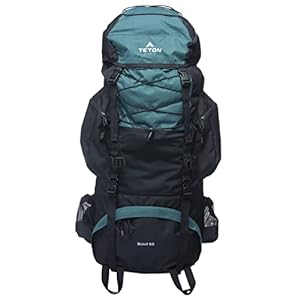
The ultra-light hiking backpack must be large enough to carry all your small belongings without being too heavy. Also, it must maintain durability to withstand potential collisions or falls. To adhere to the objective of keeping the load light, it is advisable to avoid backpacks exceeding 60 liters, as they typically weigh around 2 kg or 2.5 kg when empty—a weight deemed excessive for this purpose. Numerous brands offer backpacks with capacities of up to 55 liters that weigh less than 1 kilogram, providing an optimal balance between size and weight.
- Click here to find out how to choose your ultra-light backpack!
Backpacking Tent
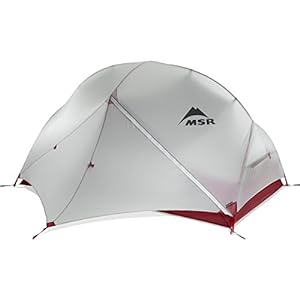
Hammocks or tents can be a real solution for sleeping in the great outdoors. Some models incorporate features such as a built-in mosquito net and rain protection facilitated by the inclusion of a tarp. But for ultralight backpacking, they represent above all an additional weight that is not very suitable for incessant movements.
For ultralight hiking, I recommend you choose a lightweight tent such as the well-known MSR Hubba NX. This tent is the most famous in the world for multi-day treks and ultralight backpacking. It can be assembled in less than 10 minutes and is available in single-person, two-person, or four-person versions. The 1-seater version of this tent weighs only 2.6 pounds, offering an incredibly lightweight solution. This feature ensures that you can stay sheltered in all seasons.
Ultralight Mattress
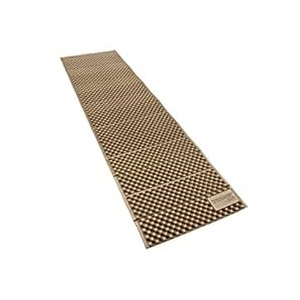
Bringing a mattress may seem superfluous, yet it quickly becomes essential. It will save you from terrible back pain the next day when you wake up when you have pitched your tent on the rocky ground! It also makes it possible to provide a layer of waterproofing so as not to feel the cold and the humidity of the ground during the night. Again, it’s up to you to find the mattress that meets your comfort criteria but will be as light as possible.
You have then the choice of very good foam mattresses like Thermarest mattresses. Thicker mattresses are also slightly heavier than the foam models. In any case, you can count on a mattress weighing less than 3 pounds.
Sleeping Bag
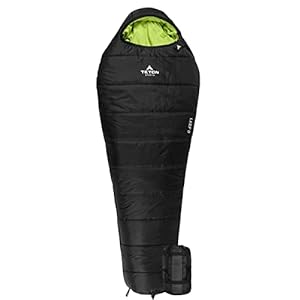
Whether in summer or winter, a sleeping bag is an essential companion. Frequently, it comes with various drawbacks: it may be too bulky for some, challenging to roll for others, and occasionally deemed too heavy for ultralight backpacking. Nevertheless, the winter sleeping bags from TETON Sports are exceptionally lightweight, especially considering their negative comfort temperature.
The TETON Sports Leef Mummy Sleeping Bag for a comfort temperature rating of 0F / -18C. Whatever the environment in which you are going to evolve, it is possible to carry equipment optimized for ultralight hiking: it combines lightness, utility, and resistance.
The Necessary Evolution During the Experience
During an ultralight hike, don’t be afraid of the changes in equipment or the continuous adaptation that you will face. The material will most certainly change along the way because we quickly get rid of objects that we never use. You will quickly realize all the superfluity that you had put on your starting list.
Sometimes it will even be the opposite: other tools or objects that we thought were useless will appear depending on the immediate environment and your needs. You will then have to create a walking stick from scratch because you feel the need for it or you will start feeding on what you find along the way.
The notion of “Do it yourself” is therefore very important for ultralight backpacking experience. As the days unfold, you will inevitably confront yourself—your most fundamental needs, your strengths, and equally, your weaknesses.
Ultralight Backpacking: FAQs
What is considered ultralight equipment?
While there isn’t a universally strict rule, certain trends can be identified. Typically, if your gear’s base weight is less than 12 pounds, you are considered an ultralight hiker, and if it’s less than 25 pounds, you fall into the category of a light hiker. Traditional hikers, on the other hand, usually have a base weight of less than 30 pounds.
What should you avoid bringing for the ultralight backpacking?
Don’t bring too many electronic devices, anything you might need “just in case”, too much food or too much clothing. However, the type of gear you take depends on where and when you are hiking. The length of the hike will also determine how much gear you will carry and what you might bring.
How much does a 60-liter backpack weigh?
The weight of a 60-liter backpack can vary depending on the brand, model, and materials used in its construction. Generally, backpacks come in a range of weights based on factors such as design, features, and the type of materials used in their construction. As a rough estimate, a typical 60-liter backpack might weigh anywhere from 2 to 5 pounds (approximately 0.9 to 2.3 kilograms) when empty.
How do I know if my backpack is too heavy?
Signs your backpack is too heavy:
- It is difficult to put on or take off.
- You hurt while wearing it.
- You feel tingling or numbness in your limbs.
- Strap marks appear on your shoulders.
- Your posture changes while you wear it.
Are ultralight backpacking techniques suitable for beginners?
Ultralight techniques can be adopted by beginners, but it’s important to gradually transition and gain experience. Start by focusing on the basics, and as you become more comfortable, refine your gear list.
Conclusion
Ultralight backpacking is not just one hiking practice among others; it allows you to go back to basics on the material level by carrying only the bare minimum. It is also a permanent interaction between the hiker, the immediate environment, and the equipment at his disposal.
In essence, ultralight backpacking shares similarities with the philosophy of bushcraft. However, it diverges in practice as ultralight backpacking is embraced in a nomadic fashion, which involves a continual change in the place of rest. By moving more simply, you will live a unique experience that will lead you to meet yourself.
Ready to try ultralight backpacking?






